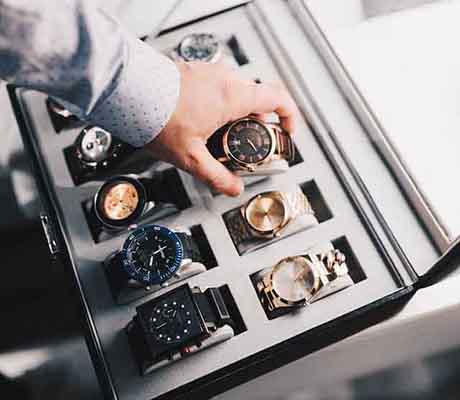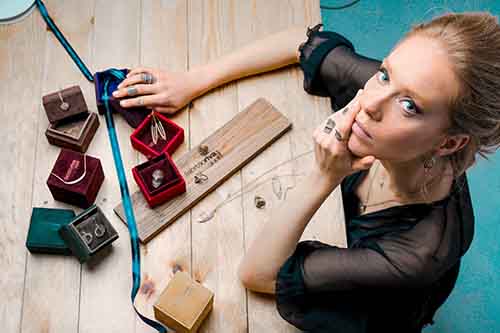Luxury packaging is special packaging. It is creating and manufacturing packaging for a luxury product. Where the package is an integral part of the product. It reflects and becomes part of the brand. It is as essential to the product. It shows and presents the product using specialty printing effects like rigid construction, magnetic closures, foam, or cloth-based interiors to hold the product. It indicates much care is taken to present this product. It lends value to the product.
This is created for the sensual world
It assists to go back to basics. Humans have five major senses touch, smell, sound, taste, and sight. With most packaging, just one of these senses is truly satisfied.
Businesses spend loads of money on visual design. However, they barely consider the manner a product feels and behaves when touched. They do not think about the sounds it may make when lifted from a shelf. They often underestimate the power of smell and its ability to evoke strong emotions.
Actually, this is what differentiates standard retailers from high-end, luxury brands. Luxury shopping is always an experience thing because customers are paying for more than a product. If you wish your product packaging to pop, turn it into a sensual experience. Appeal to the innate human urge for physical awareness.
It may sound ostentatious, but modern consumerism is entirely about gratification. It is an attempt at finding different methods to connect with the world. You can take advantage of this need by giving shoppers what they wish for, an experience rooted in sensation.
Packman Packaging India’s top manufacturer of luxury packaging for several top-notch national and international brands shares some ways to create luxury packaging.
Make it a mission
One of the biggest separators between standard and luxury packaging is the degree of interaction needed. High-end products take its consumers on a journey of discovery.
They are not out in the open, for the whole world to see. Luxury is synonymous with exclusivity. If you wish to make something special, provide access to those who buy and shut everyone else out. In the retail sector, it is known as delayed gratification. It triggers a procedure of user discovery by keeping products at the end of an unveiling. Think of pretty tissue papers, box toppers, pull tabs, ribbon closures, or padded inserts.
The target is to create suspense. You want your customers to feel giddy with anticipation while they look at your product.
Lend it a heady scent
It will not always be feasible to add scents to luxury packaging. However, this is a handy method to expand the customer experience.
Well, this technique is growing in prominence, specifically across Europe, where several brands are taking inspiration from high-end fragrances.
The applications are unending. With so many options, it could be tricky to zero in on perfect scents. Try to take advantage of common associations. For example, upmarket whiskeys are generally, linked to older men.
Think of leather, suede, musky aftershaves, and might even a hint of smoke. The aim should be to evoke a sense of place, moment, and purpose.
Include some audible weightage
Sound plays a lot more integral role in retail than several actually realize. This is mainly because standard products seem to sound the same.
It is solely when you choose up a luxury item, having a gently crinkled tissue lining, creaking hinge, or perhaps a softly swooshing lid that it becomes clear what audible branding could do. Usually, it is low-pitched sounds that invoke luxury vibes. There are exceptions to this rule but think of things such as cellophane or plastic blister packs. They are economical to manufacture and quite common. The sounds they produce are high-pitched.
Heavy, lined boxes are more possibly to groan and creak at a lower pitch. It is one of the reasons paper and cards are preferred for luxury products. Plastics are a rarity for high-end brands.

Be careful with colors
Bright color seems to be linked with affordability. So, to place your product at the top end of the market, stick to using subtle shades. In fact, bright tones are feasible, but be careful not to use excessive
It might make the packaging look hectic as well as disorganized. One instance could be bright, striking red. On its own, it is greatly suited to luxury products. When grouped with other bright colors, it can begin to look less elegant. Metallics are a top choice and quite popular with luxury brands. They show light and form a mirror ball impact.
Also, there is no ignoring the reality that silver and gold shades are, naturally, linked with precious metals and expensive jewelry.
Enable the packaging to speak
One trap that is quite simple to fall prey to is the idea that a luxury package must be emblazoned having a huge logo. The opposite is real, definitely for contemporary brands.
For the last decade or near the trend for luxury products has been a delicate and minimalist touch. Simply think of the handbag boxes from some of the leading luxury or accessories brands. They are remarkably simple, with simple block colors and an elegantly crafted logo. It is generally small, understated, and excellent at drawing the eye inwards.
Luxury products do not have to shout over all other things else to be noticed. The reality is, that they do not want attention at any cost. Luxury brands are completely about attracting the right audience.
Think pertaining to the real details
In multiple ways, this is the hardest part of the process. You may put plenty of time and money into creating an incredible package. But, if it eventually, does not stand up to the rigors of distribution and stocking, it will all be for nothing.
That is why it’s essential to consider environmental stressors and other factors that could affect the condition of materials. Humidity is one of the biggest challenges. Moisture makes card bend, satin to molder, and plastic warp. Either design packaging that is able to withstand environmental pressures or spend more money to protect it. It is common for designer brands to ship their products using smaller batches for more space and control. It is only left to you to decide if the expense is worthwhile.





